KUMON – a brief history
The Kumon method of studying Math was developed in Japan in the 1950s by a Math teacher and parent, Toru Kumon. He began producing study materials to help his own son, Takeshi, who was struggling with elementary school Math. As Takeshi’s ability improved, the father was persuaded to allow other local children to use the worksheets and so the Kumon organization was born
Since then the Kumon Institute of Education has grown into a network of centres worldwide, with more than 4 million students across the globe studying with the Kumon method. In South Africa, Kenya, Namibia, Botswana and Zambia there are over 20,000 Kumon Math and English students studying in over 300 centers.
Our Philosophy
Toru Kumon believed that nothing was more important than education, but he saw that teachers were under tremendous constraints. Today we recognize that the pressure on teachers and pupils is greater than ever, so Kumon Math and English’s programs are designed to supplement school education.
More than fifty years after the inception of the Kumon Method, we still stand firm by the educational principles outlined below
- Children have enormous and often untapped potential to excel
- Strong skills in English and Math are key to academic achievement
- Education must focus on the long-term needs of each individual child
How Kumon Math and English can help you to help your pupils
Parents who have children studying in Kumon Math and English programmes have confidence in the educational method and believe that Kumon Math and English study can enhance their child’s development. They have this confidence because they realize that we share common values and aims with their child’s school and can play an important complementary role.
The belief that we can make a contribution stems from the fact that Kumon Math and English is not in any way intended to be a replacement for school, but rather is designed to complement and help enrich each child’s education. Kumon Math and English’s focus is on mastering core subjects and providing important learning skills that your pupils will need for success across the broad school curriculum.
Kumon Math and English can benefit children who:
- – Have low self-confidence and do not participate in the classroom
- – Are lacking basic skills and are falling behind
- – Do not enjoy reading
- – Are doing well but want to be challenged further
- – Need to be stretched if they are to remain interested and reach their potential
- – Have short attention spans
- – Are able students but needing discipline to “knuckle down”
- – Lack focus and a positive attitude to learning
- – Have special learning needs
- – Enjoy Math and/and or English study and would like extension work
- – Have anxiety related to schoolwork and exams
- – Lack self-esteem
How Kumon Math and English complements school
Kumon Math and English’s long-term aim is to enable children to cope comfortably with their studies throughout school so they can realize their potential.
The school curriculum ensures that topics taught in the classroom are presented at a fixed rate, with much material covered during the year. We realize that this puts pressure on teachers to find a balance between progressing through the curriculum and ensuring that their pupils are working at a pace and level that is suitable for each one of them.
Kumon Math and English can play a vital role because they complement, but works quite differently from school. The programmes are tailored to each individual child, are linear in nature, working as a series of building blocks. Only once the child “masters” a topic can they move on to the next one. Every child receives as much practice as they need to become proficient in each learning focus.
In Kumon Math children become fluent in arithmetic and basic algebra (amongst other skills). Calculators are not used at all. The English programme covers phonics, reading, comprehension and developing vocabulary. Students studying Kumon Math and English develop these strong core skills
